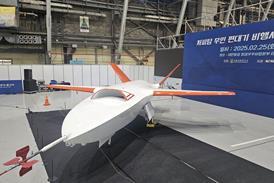Airbus Industrie has instructed all A330 and A340 operators to de-activate the aircraft's electrically driven hydraulic pumps, following a series of fires which has left at least two aircraft badly damaged.
In the latest incident, an auxiliary pump is suspected of having overheated on a Malaysia Airlines (MAS)A330-300 (9M-MKA) parked at Singapore's Changi Airport in the early hours of 4 January. The resulting fire caused an estimated $30 million worth of damage before being extinguished.
The A330 was undergoing a routine overnight line check, when the fire started in the aircraft's right-hand main landing gear wheel well. The fire is understood to have caused "significant damage" to the well, fuselage panels, frames and keel beam and will require at least six months to repair.
In October, an Air Mauritius A340-300 suffered an estimated $28 million worth of damage from fire started by an overheated pump during routine ground maintenance. This followed the complete loss of an Air France A340 to fire also on the ground in January 1994, the cause of which has never been officially determined.
The problem centres on the A330/340's three Vickers hydraulic-electrical pumps, which are used as an in-flight back-up to engine-driven pumps working the aircraft's yellow, green and blue hydraulic systems. The yellow electrical pump, in the forward bulkhead of the right main wheel well, is also used on the ground to work the aircraft's cargo doors.
After the Air Mauritius fire, airlines were instructed to not to use the pumps in flight until they had been checked. Before the latest incident, several airlines had discontinued using the pumps completely and were opening and closing cargo doors manually.
According to MAS, the airline had also de-activated and isolated the pumps on its aircraft, both electrically and hydraulically.
Local sources, however, suggest the A330's remote controlled circuit breaker was tripped and the pump was active while at Changi. Airbus in the meantime, is looking at alternative pumps for the A330/340.
Source: Flight International























